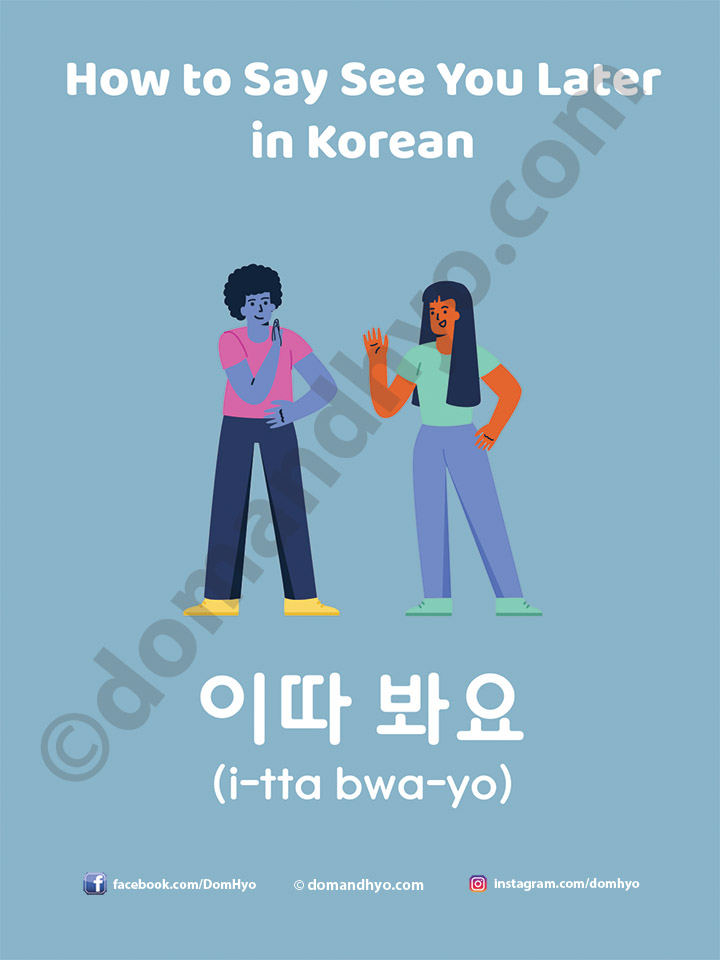
Today, we will introduce some popular ways to say ‘see you later’ in Korean. This phrase can be categorized in ‘goodbye’ which we did a post on here. For this post, we will do a more literal translation.
Let’s start with our first phrase.
이따 봐. (i-tta bwa)
이따 봐요. (i-tta bwa-yo)
이따 보자. (i-tta bo-ja)
The first one is casual, and you can use it with your close friends and family. The second is not totally formal, but it’s a polite form to use with people similar to your age who you’re not close to. ‘이따’ means ‘later’ and ‘봐/봐요’, is the present tense conjugation of the verb ‘보다’. Overall, this is commonly used among friends, and you wouldn’t use this in a business setting or towards someone like your boss. It would be like telling your boss “Catch you later!”
이따 보자 is more loosely translated as “Let’s see each other later.”
나중에 봬요. (na-jung-e bwae-yo)
이따 봬요. (i-tta bwae-yo)
Now, these are a bit more formal than the earlier two. You can feel totally comfortable using these with people a bit higher in status than you or strangers. If you notice, the verb ‘보다’ is conjugated to the formal (존댓말) form to make it more formal. You’ll hear this conjugation frequently.
이따 뵙니다 (i-tta poem-ni-da)
This is the most formal version you can use. Use this with your boss, clients, and coworkers.
And here are some example sentences!
안녕! 이따 봐! (an-nyeong! i-tta-bwa!) = Bye! See you later!
그래요. 이따 봐요. (geu-rae-yo. i-tta bwa-yo) = Okay. See you later.
이따 봐요 여러분. (i-tta bwa-yo yeo-reo-bun) = See you later everyone.
